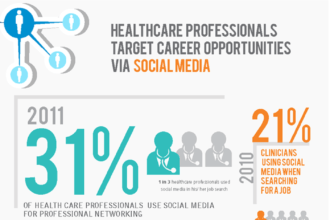I am writing this as I wing my way back to Seattle after a quick, one day stopover to speak at the annual mHealth conference held this year at the Gaylord National Resort and Conference Center just outside Washington, DC. As always, the atrium at the Gaylord was fully decked out in Holiday regalia. The hanging crystal Christmas tree, water fountains and laser show were something to behold.
I am writing this as I wing my way back to Seattle after a quick, one day stopover to speak at the annual mHealth conference held this year at the Gaylord National Resort and Conference Center just outside Washington, DC. As always, the atrium at the Gaylord was fully decked out in Holiday regalia. The hanging crystal Christmas tree, water fountains and laser show were something to behold.
I was invited to mHealth to provide a keynote at a side meeting organized by the Intelligent Health Association. Association founder Harry Pappas and his team deserve kudos for organizing a truly stellar line-up of educational topics and for delivering a sizeable audience for the participating speaker and panelist presentations. Harry, next year you need a bigger room!
Since my speaking assignment at the Intelligent Health event came at the tail end of the mHealth conference, I decided to deliver a keynote where I would share some personal perspectives on the so-called mHealth movement, wearable devices, and the current status of health IT. I figured my audience would have already had their fill of gee-whiz gizmos being promoted at the conference. While I won’t elaborate, I will share the abstract for my keynote which was titled, Journey of a Lifetime -What I’ve Learned About Technology, Medicine, Human Behavior and Patient Engagement. And yes, I did spend some time discussing the new Microsoft Band:
In his role as Microsoft’s Senior Director of Worldwide Health, Dr. Bill Crounse travels the globe looking for compelling technologies and best practices in Health IT. As a practicing physician, technologist, broadcaster, blogger, and tech company co-founder over a career spanning 35 years he’s learned many lessons about healthcare, technology, business, and human behavior. Dr. Crounse shares some personal, pragmatic insights on what we can expect from technology in health and healthcare. One thing is certain, the next decade will bring about new technologies and shocking changes that will fundamentally reshape the practice of medicine and the ways people access and consumer healthcare services. The effect on healthcare providers and institutions as we know them today is likely to be profound.
My keynote was preceded by a thoughtful presentation by Dr. Wendy Nilsen from the NIH Office of Behavioral and Social Sciences Research on Research Trends in Wearables and mHealth. While government agencies like the NIH, FDA, CDC, etc. may be challenged by the pace of technology innovation in the private sector, they are striving to adapt many policies, procedures and even regulations to better serve the public in a healthcare environment that is experiencing a kind of seismic shift.
While a few meetings and work coming from Redmond prevented me from attending all of the presentations that followed my keynote, I did catch a panel discussion presented by Jim Li, US director for Omron and Lucas Schlager, chief evangelist for Pristine, a company developing some novel solutions based on Google Glass and other heads-up display technologies.
 Jim Li shared information about some very good population health work underway in Japan where Omron is based. He demonstrated heat maps that have been created from data that is streaming from wearable and other devices currently being used by more than a million Japanese citizens. The maps, covering all of Japan, show seasonal variations in parameters such as blood pressure, weight and sleep cycles of Japanese citizens. Such information can be used by government agencies and local authorities to develop effective health education programs and interventions.
Jim Li shared information about some very good population health work underway in Japan where Omron is based. He demonstrated heat maps that have been created from data that is streaming from wearable and other devices currently being used by more than a million Japanese citizens. The maps, covering all of Japan, show seasonal variations in parameters such as blood pressure, weight and sleep cycles of Japanese citizens. Such information can be used by government agencies and local authorities to develop effective health education programs and interventions.
Lucas Schlager provided examples of very practical industrial uses for Google Glass in health and medicine. While Glass may never find a home with consumers, I’ve always appreciated the potential for hands-free, heads-up display solutions for care team video collaboration, use in surgical settings, and as a way to improve clinical education. Pristine is doing some really good work by focusing on these and other applications for Glass and related devices in healthcare.
With that, I’ll sign off for the Holidays. Thank you for your loyal readership of HealthBlog in 2014. All of us at Microsoft wish you and your family a very Happy Holiday Season and a Happy New Year!







